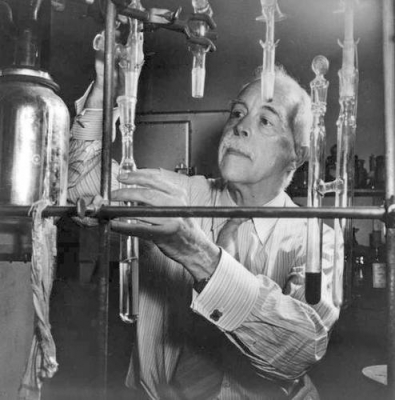
G. N. Lewis was born in 1875 in Weymouth, Massachusetts. After receiving his PhD in chemistry from Harvard University and studying abroad in Germany and the Philippines, Lewis moved to California in 1912 to teach chemistry at the University of California, Berkeley, where he became the Dean of the College of Chemistry and spent the rest of his life. As a professor, he incorporated thermodynamic principles into the chemistry curriculum and reformed chemical thermodynamics in a mathematically rigorous manner accessible to ordinary chemists. He began measuring the free energy values related to several chemical processes, both organic and inorganic. In 1916, he also proposed his theory of bonding and added information about electrons in the periodic table of the chemical elements. In 1933, he started his research on isotope separation. Lewis worked with hydrogen and managed to purify a sample of heavy water. He then came up with his theory of acids and bases, and did work in photochemistry during the last years of his life.
Though he was nominated 41 times, G. N. Lewis never won the Nobel Prize in Chemistry, resulting in a major Nobel Prize controversy. On the other hand, Lewis mentored and influenced numerous Nobel laureates at Berkeley including Harold Urey (1934 Nobel Prize), William F. Giauque (1949 Nobel Prize), Glenn T. Seaborg (1951 Nobel Prize), Willard Libby (1960 Nobel Prize), Melvin Calvin (1961 Nobel Prize) and so on, turning Berkeley into one of the world’s most prestigious centers for chemistry. On March 23, 1946, Lewis was found dead in his Berkeley laboratory where he had been working with hydrogen cyanide; many postulated that the cause of his death was suicide. After Lewis’ death, his children followed their father’s career in chemistry, and the Lewis Hall on the Berkeley campus is named after him.
Picture Credit : Google




